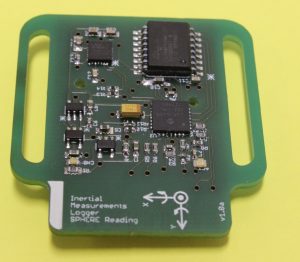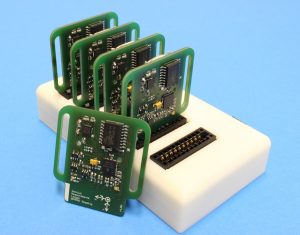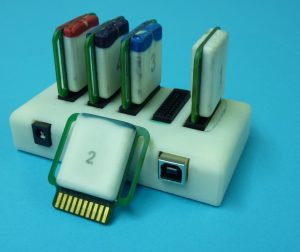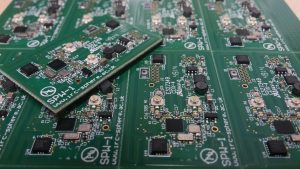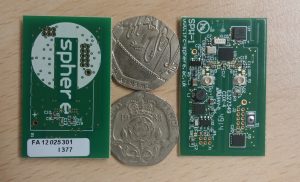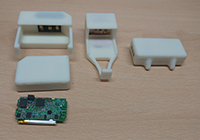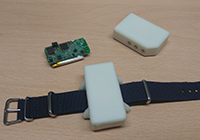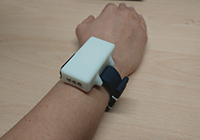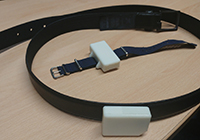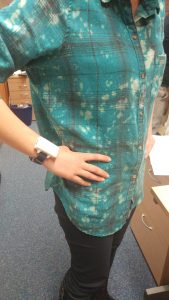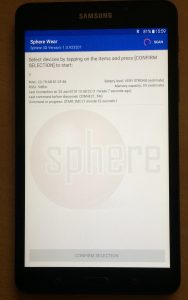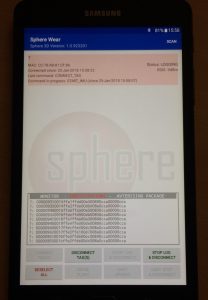A family of sensors
This page details our wearable sensors. It shows how they have developed and where we are going. The SPW-1 and SPW-2 hardware was co-designed with colleagues in the University of Bristol.
Reading_Dual
Our first wearable sensor was perhaps not what might be expected. Wearables typically incorporate gyroscopes to give position estimation. However, gyroscopes are extremely power hungry. On the other hand, accelerometers consume in order of 1000 times less current than gyroscopes. Our research created a novel dual-accelerometer design with two accelerometers spaced 30mm apart. With some extra mathematics, and a sensor on the wrist, we can estimate the relative position of the arm to within 12 degrees. The 30mm spacing is a compromise between position accuracy and the activity that is to be detected. This method proved to be very useful in the classification of daily activities and ambient assisted living, for example in detecting if someone was reaching up to take an item off a shelf, perhaps in a kitchen or bathroom.
The work was published in:
Villeneuve, E., Harwin, W., Holderbaum, W., Janko, B. and Sherratt, R. S. (2017) Reconstruction of angular kinematics from wrist-worn inertial sensor data for smart home healthcare. IEEE Access, 5. pp. 2351-2363. doi: 10.1109/ACCESS.2016.2640559
Villeneuve, E., Harwin, W., Holderbaum, W., Sherratt, R. S. and White, R. (2016) Signal quality and compactness of a dual-accelerometer system for gyro-free human motion analysis. IEEE Sensors Journal, 16 (16). pp. 6261-6269. doi: 10.1109/JSEN.2016.2582262
Two very low power accelerometers spaced exactly 30mm apart forming a low-power estimation method alternative to a gyroscope:
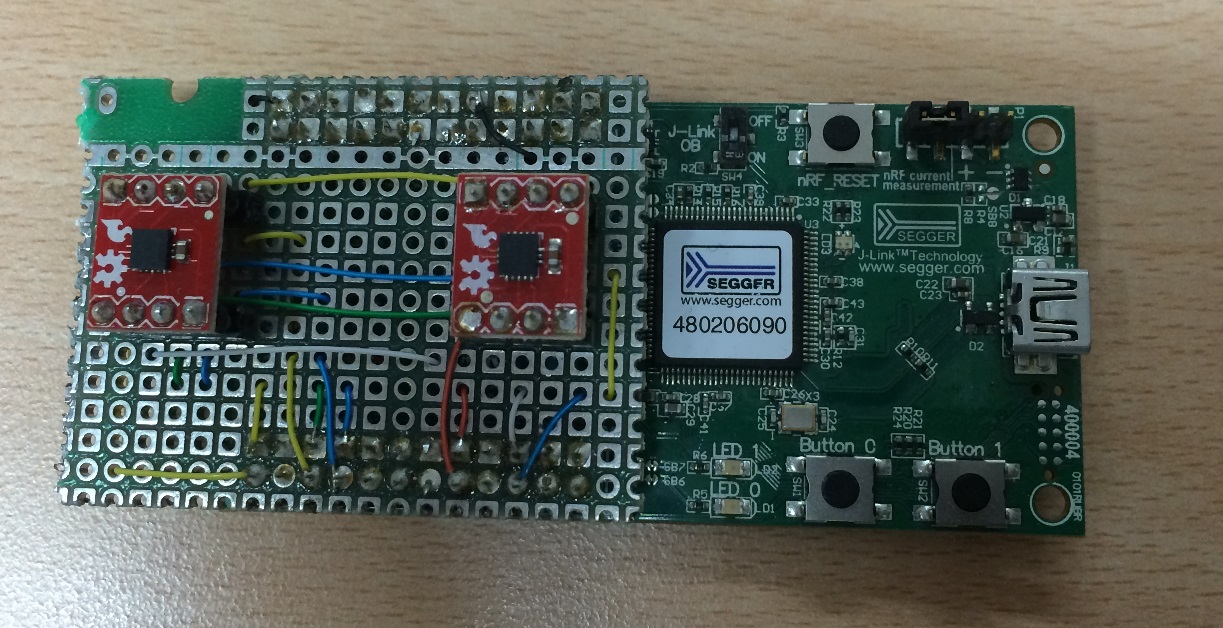
Our prototype of the dual-accelerometer design was incorporated into the SPW1 and SPW2 devices, below.
SILV1
This was a logging wearable with USB download functionality.
|
|
|
|
SPW1
While the SPW1 wearable had low functionality compared to today’s wearables, it consumed very lower power offering some 4 weeks of operation per battery charge. It incorporated our dual accelerometer arrangement and a Bluetooth v4 SoC.
|
|
|
The work was published in:
Villeneuve, E., Harwin, W., Holderbaum, W., Janko, B. and Sherratt, R. S. (2017) Reconstruction of angular kinematics from wrist-worn inertial sensor data for smart home healthcare. IEEE Access, 5. pp. 2351-2363. doi: 10.1109/ACCESS.2016.2640559
SPW2
The SPW2 wearable was an enhanced version of SPW1. It further contained a Qi Charger, local FLASH storage and a separate IMU (accelerometer and gyroscope).
![SPW-2: CC2650 based wearable accelerometer sensor [5].](https://www.researchgate.net/profile/Atis_Elsts/publication/322316942/figure/fig1/AS:614207590498331@1523449909803/SPW-2-CC2650-based-wearable-accelerometer-sensor-5.png)
The work was published in:
Sherratt, S. R., Janko, B., Hui, T., Harwin, W. S., Dey, N., Díaz-Sánchez, D., Wang, J. and Shi, F. (2019) Task scheduling to constrain peak current consumption in wearable healthcare sensors. Electronics, 8(7). 789. doi: 10.3390/electronics8070789
Hui, T. K. L. and Sherratt, S. (2018) Coverage of emotion recognition for common wearable biosensors. Biosensors, 8 (2). 30. doi: 10.3390/bios8020030
Ghamari, M., Villeneuve, E., Soltanpur, C., Khangosstar, J., Janko, B., Sherratt, R. S. and Harwin, W. (2018) Detailed examination of a packet collision model for Bluetooth Low Energy advertising mode. IEEE Access, 6. pp. 46066-46073. doi: 10.1109/ACCESS.2018.2866323
Fafoutis, X., Vafeas, A., Janko, B., Sherratt, R. S., Pope, J., Elsts, A., Mellios, E., Hilton, G., Oikonomou, G., Piechocki, R. and Craddock, I. (2017) Designing wearable sensing platforms for healthcare in a residential environment. EAI Endorsed Transactions on Pervasive Health and Technology, 3 (12). 153063. doi: 10.4108/eai.7-9-2017.153063
3-Day Parkinson’s Disease stability sensor
Furthering our research with University of Southampton Health Sciences, we created a sensor system for use in 3-day long continual monitoring of people with Parkinson’s disease, in their home. This setup required a pair of modified SPW-2 sensors, one on the non-dominant wrist and one on the base of the back. We altered SPW2 in order to have significantly more local FLASH memory (2Gbit) and doubled the LiPo battery capacity (210mA). The software was changed to continuously sample the on-board IMU at 50Hz and store the data to the local FLASH. The devices were controlled via our android app installed on a standard tablet.
Figures below show the sensor arrangement for the 3-day Parkinson’s study.
|
|
|
|
|
|
|
|
|
|
emotionWare
Please see our emotionWare page for details of our sensor that can predict human emotion.
Our next generation wearable – Sapphire
Please see our Next Generation Wearables page for details of Sapphire, our next generation sensor currently being developed.

